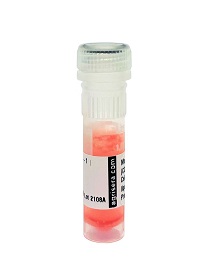1

Anti-Pectic polysaccharide, homogalacturonan (monoclonal, clone LM18)
From the laboratory of Paul Knox, Phd, University of Leeds, United Kingdom
- Product Info
-
Sub class: IgG Immunogen: Pectic polysaccharide, Homogalacturonan, Host: Rat Clonality: Monoclonal Purity: Cell culture supernatant. Format: Liquid Quantity: 1 ml Storage: Store at +4°C (short term) and at -20°C (long term). Make aliquots to avoid repeated freeze-thaw cycles. Please remember to spin the tubes briefly prior to opening them to avoid any losses that might occur from any material adhering to the cap or sides of the tube. Tested applications: ELISA (ELISA), Immunoflourescence (IF) Recommended dilution: 1:10 (ELISA, IF) - Reactivity
-
Confirmed reactivity: Higher plants, ferns and mosses Not reactive in: No confirmed exceptions from predicted reactivity are currently known - Additional Information
-
Additional information: Contains 0.05% Sodium Azide.
No known cross-reactivity with other polymers.
Binds to partially methyl esterified homogalacturonan but can also bind to un-esterified homogalacturonan - Background
-
Background: The plant cell wall surrounds the plant cell as a complex network of polysaccharides classed as: cellulose, hemicelluloses and pectic polysaccharides and glycoproteins. Anchored to or embedded into plant cell wall are other polymers, like: lignin, suberin or cutin.
Homogalacturonan is a pectic polysaccharide of alpha-1,4 linked galacturonic acid residues. Pectin contains a complex set of polysaccharides that can be found in many primary cell walls. - Product Citations
-
Selected references: Verhertbruggen et al. (2009). An extended set of monoclonal antibodies to pectic homogalacturonan. Carbohydr Res. 2009 Sep 28;344(14):1858-62.doi: 10.1016/j.carres.2008.11.010. - Reviews:
-
This product doesn't have any reviews.
Accessories

From the laboratory of Paul Knox, Phd, University of Leeds, United Kingdom

From the laboratory of Paul Knox, Phd, University of Leeds, United Kingdom

From the laboratory of Paul Knox, Phd, University of Leeds, United Kingdom

From the laboratory of Paul Knox, Phd, University of Leeds, United Kingdom
